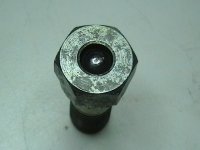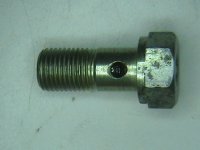Personally I think you're wrong. Gasoline engine; low compression, high combustion temperature. Diesel engine; high compression, low combustion temperature. Different loads, different thermal efficiencies, hence different thermostat ranges.
This is a technical issue of a different nature Greg, I'd be happy to discuss it with you in a separate thread.
Even if not, it's still possible on an otherwise overheating diesel engine for cylinder temperature to rise to the point where pre-ignition begins to occur - which necessarily throws the detonation sequence out of time - causing engine stall or worse.
Um, you can't get "pre-ignition" from a compression-ignition (diesel) engine. Last I heard nothing happens until fuel is injected. 
By the way, can you show a diagram or a photo of that
fuel pressure regulating valve inside a banjo bolt ? I'm curious why I never encountered such a thing on the 4 Chinese tractors I've owned.
They're kinda tricky to spot but the non-adjustable ones will have a dimple in the center of the hex (which is actually a steel ball pressed in), while the adjustable ones will have a slotted screw and lock nut. I'll see if these pics will work. You will find these on almost all small bore diesel engines, even Caterpillar. Diesel bugs can corrode the ball and seat to a point where the valve is useless and fuel flows freely in a closed loop.


